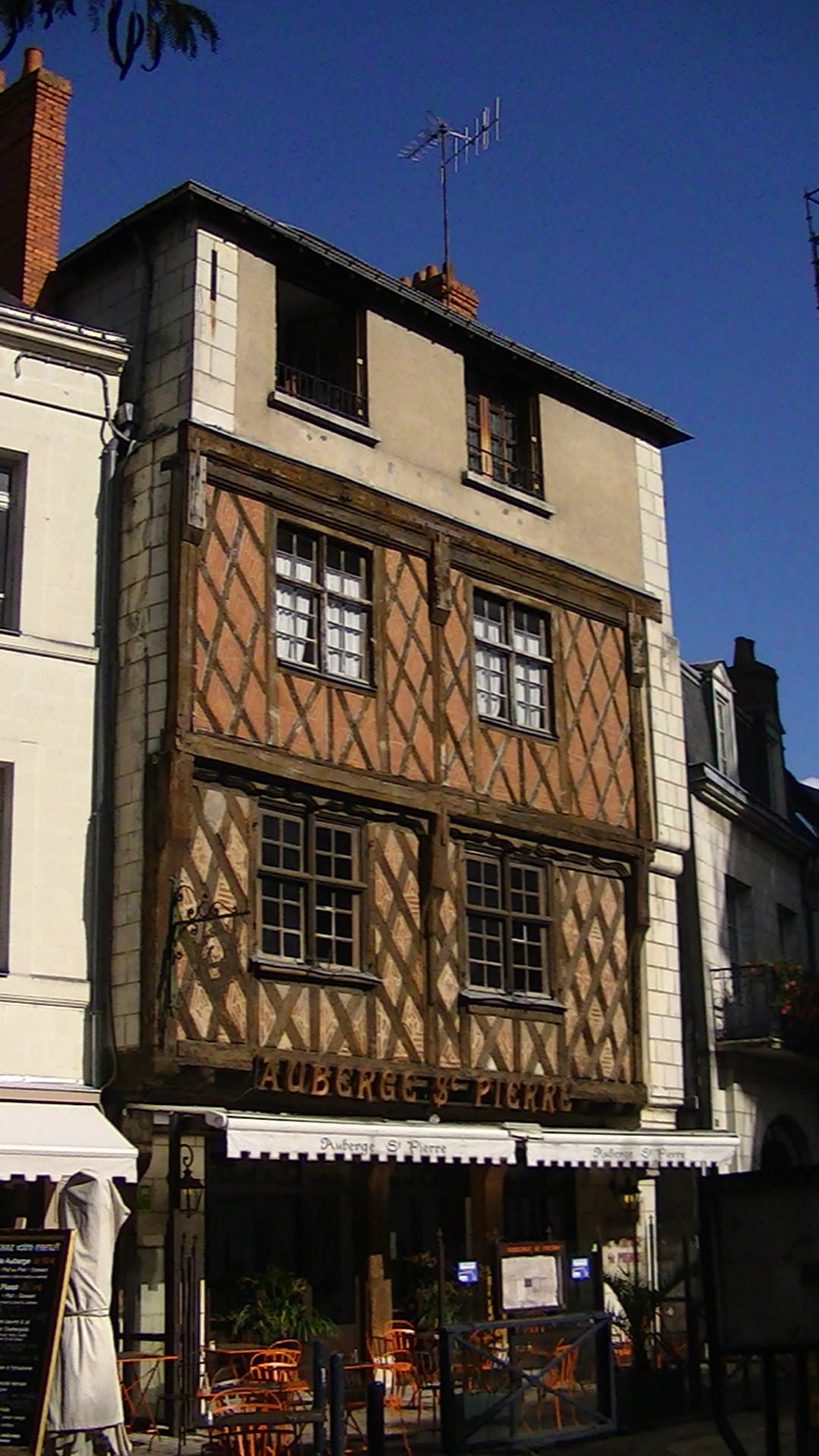A lot of little towns and villages in France still have examples of medieval "timber-framed" wooden houses. Nantes still has a few of them in its medieval district too. Unless they have been destroyed somehow, the sturdier houses can easily survive to the present. But of course, many of them weren't very sturdy and fell down long ago, and even the strongest wooden buildings can be destroyed by fire or other damage.
Nantes also has some examples of medieval "hôtels particuliers", a phrase that now means "town house" or "row house", but used to mean the house of a wealthier person who could afford to build something bigger, and in stone instead of wood.
Timber-framed houses
The most prominent timber-framed house in Nantes is definitely the Maison des Apothicaires in Place des Carmes. I've mentioned it before, because it was probably built against the Roman wall, and I never had a chance to go inside and investigate. |
| Maison des Apothicaires |
A bit further north on Rue Bossuet, just beside the little parking lot where bits of the Roman wall are still visible, are these two houses, numbers 2 and 3. I suppose it would be possible to go inside and see the rest of the Roman wall since they were obviously built right against it as well, but in this case they are still being used as private houses.
 |
| Rue Bossuet |
Other timber-framed buildings are dotted throughout the medieval quarter:
7 rue de la Juiverie (the medieval Jewish neighbourhood), and the back side seen from Rue des Echevins:
Another one exists at 2 rue de la Fosse, which was in the suburbs in the Middle Ages, on the western side of the Erdre (near the modern Place Royale):
The 4 houses above are listed as national historical monuments. I don't know why some houses are national monuments and others aren't, but there are at least five more that aren't:
15 rue de la Bléterie and 7 rue Ste-Croix:
8 rue de la Bâclerie (the two on either side of it look medieval as well) and 15 rue de Verdun:
19 rue des Carmes:
To compare with other towns and cities, here are some timber-framed houses from elsewhere in France (and England):
Place du Pilori, Guérande:
Maison d'Adam, Angers:
3 place St-Pierre and Auberge St-Pierre, Saumur:
The "crooked house" in Canterbury, England, 28 Palace Street (although this one is actually from the 17th century, not technically medieval):
Two more from the same street in Canterbury, 17 Palace Street and 8 Palace Street:
And the Weaver's House in Canterbury:
Medieval hôtels particuliers
Rich merchants, or noble relatives of the ruling family of the Duchy, could afford to build houses that were less likely to fall over or burn down. Aside from the castle, there aren't really any "medieval" hôtels in Nantes - the oldest existing ones are from the 15th and 16th centuries, but that's close enough. They were usually built after the Duchy of Brittany was annexed to France, and the nobles were no longer focused on building defensive castles to prevent that annexation. Most of the hôtels particuliers were built by merchants in the 18th and 19th centuries, and there are far more examples of those, but I will save those for a later post. |
| Hôtel St-Aignan |
| Hôtel de Châteaubriant |
| Courtyard of the Hôtel de Châteaubriant |
Other mansions were located in the same area, some of which also were destroyed by bombs during World War II. At 3 rue Fénelon, there is still one mansion, along with its "bartizan", a round tower built into one corner. Originally, bartizans were defensive constructions, but here it is purely decoration.
And lastly, a mansion dating from a bit later, the 17th century, at 3 rue du Château, not far from the castle itself:
There is one remaining medieval monument: the cathedral, which needs a post all to itself, the next time I have time to write one!







